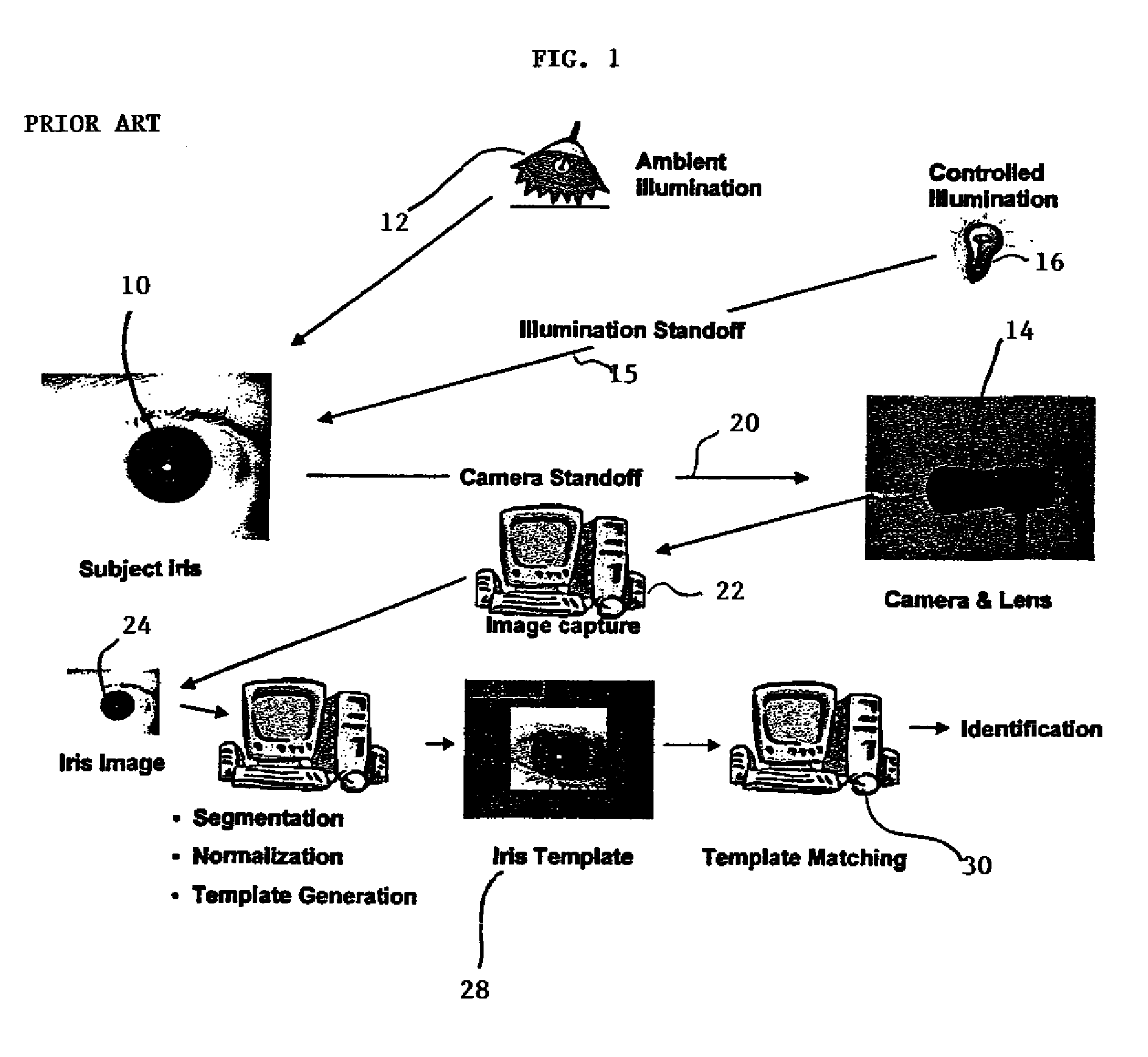Methods and systems for biometric identification
a biometric identification and biometric technology, applied in the field of biometric identification systems, can solve the problems of large number of servers, large number of systems, and difficulty in iris recognition techniques for some applications, and achieve the effect of improving the acquisition of iris images
- Summary
- Abstract
- Description
- Claims
- Application Information
AI Technical Summary
Benefits of technology
Problems solved by technology
Method used
Image
Examples
Embodiment Construction
[0026]As described above with reference to FIG. 1, a captured iris image is then segmented, normalized and an iris template (commonly called an iris code) is generated. The template is then matched against an existing database of previously enrolled irises; a match against the database indicates the current iris is the same iris used to create the template that is in the database.
[0027]Segmentation identifies the boundaries of the pupil and iris. Normalization remaps the iris region between the pupil and the sclera (the white of the eye) using a transform that removes the pupil size variation. FIGS. 2A and 2B are an example of a polar transformation described in U.S. Pat. No. 5,291,560 (issued to Daugman), as is known to those of skill in the art.
[0028]FIG. 2A depicts an iris image with segmentation 200 indicated. FIG. 2B depicts a normalized image. For this example, the normalized image has increasing radius 240 from top to bottom and increasing angle from left to right, as is know...
PUM
 Login to View More
Login to View More Abstract
Description
Claims
Application Information
 Login to View More
Login to View More - R&D
- Intellectual Property
- Life Sciences
- Materials
- Tech Scout
- Unparalleled Data Quality
- Higher Quality Content
- 60% Fewer Hallucinations
Browse by: Latest US Patents, China's latest patents, Technical Efficacy Thesaurus, Application Domain, Technology Topic, Popular Technical Reports.
© 2025 PatSnap. All rights reserved.Legal|Privacy policy|Modern Slavery Act Transparency Statement|Sitemap|About US| Contact US: help@patsnap.com



